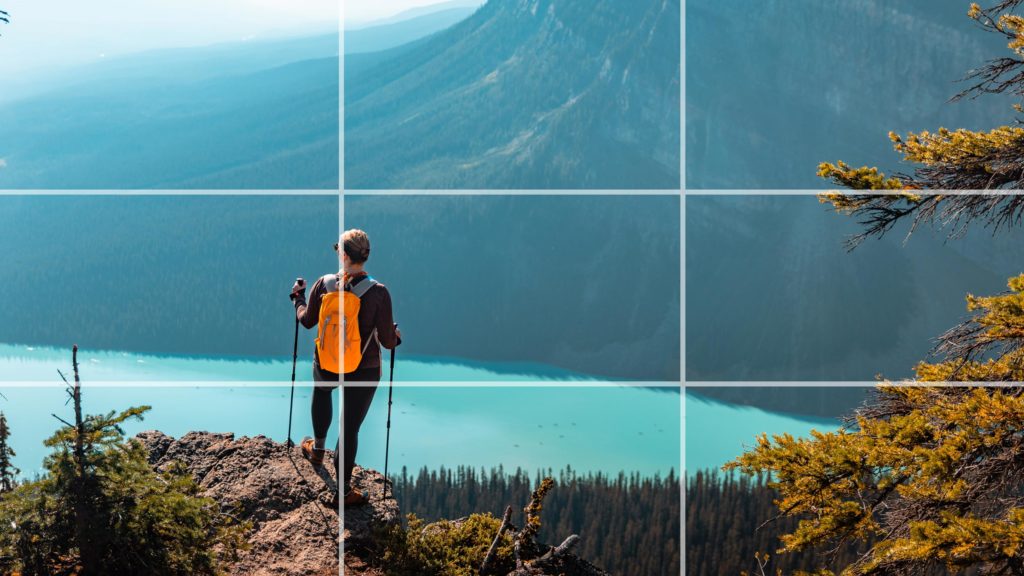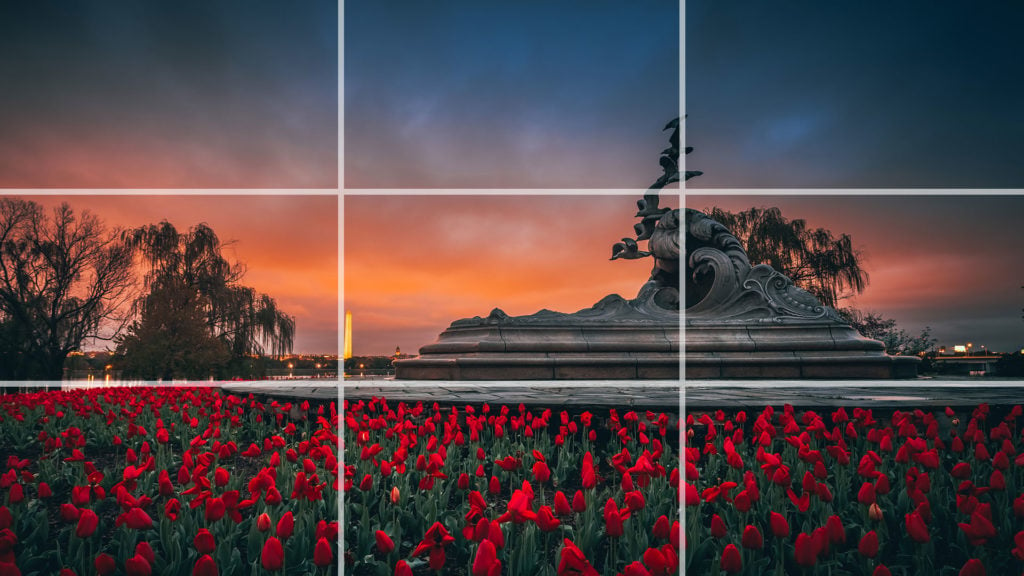The Rule of Thirds is a fundamental concept in photography composition that can enhance the visual impact of your images. It involves dividing your image into nine equal parts using two horizontal and two vertical lines. The idea is to place your main subjects along these lines or at their intersections to create a balanced and visually pleasing composition. This is typically one of the first photography tips photographers learn for better compositions.
In this post I’ll go over all of the basics of the Rule of Thirds in photography.
Table of contents
What is the Rule of Thirds?

Let’s dive into how the Rule of Thirds works. The Rule of Thirds is a fundamental concept in photography composition that divides an image into nine equal parts using two horizontal lines and two vertical lines. This creates a grid of nine squares, with four intersecting points known as power points. This is considered the Rule of Thirds grid. By aligning the important elements of your photo with these power points or along the grid lines, you can create a visually balanced and captivating image.
The Rule of Thirds has been around since 1797 and has become a cornerstone of photography composition. It helps photographers create a sense of balance and interest in their images. By placing key elements along the grid lines or intersections, you guide the viewer’s eye and create a more dynamic composition.
For example, if you are a landscape photographer and have a landscape photo with a beautiful sky, you might place the horizon line along the lower third to give more emphasis to the sky. Or, if you’re taking a portrait of someone, you can position the subject’s eyes along the upper third line to create a natural focal point.
How to Apply the Rule of Thirds

Placing your subject
When framing your shot, consider placing your subject slightly off-center, aligned with one of the grid lines. For example, if you’re capturing a majestic landscape, position the horizon along either the top or bottom grid line instead of directly in the middle. This technique adds depth and visual interest to your photo, drawing the viewer’s attention to the subject while allowing them to appreciate the surrounding environment.

Most cameras will allow you to turn on a grid in the viewfinder for the Rule of Thirds to help you frame your compositions. Additionally while editing your photos in Adobe Lightroom or Adobe Photoshop you can apply a grid while using the crop tool.
Balancing elements
The Rule of Thirds also helps to achieve balance within your composition by distributing the visual weight of the elements. If you have a dominant subject on one side of the frame, try to balance it with a smaller element on the opposite side. This can be achieved by placing a secondary subject or point of interest along one of the grid lines or power points. By doing so, you create a harmonious composition that keeps the viewer engaged.
Leading lines and movement


Incorporating leading lines into your composition is another way to make use of the Rule of Thirds. Leading lines are elements that guide the viewer’s eyes toward the main subject or point of interest. By aligning these lines with the grid lines or power points, you can create a sense of movement and draw attention to specific areas of the photo. This technique adds depth and dynamism to your images, making them more visually compelling.
Negative space

The Rule of Thirds can also be applied to the use of negative space. Negative space refers to the empty areas within a photograph. By positioning a significant portion of your image in the empty grid sections of your composition, you can create a sense of balance and emphasize the main subject. This technique is particularly effective for highlighting small subjects or isolating them from distracting backgrounds.
When (and How) to Break the Rule of Thirds
While the Rule of Thirds can be a valuable guideline, there are times when breaking it can lead to more creative and unique compositions. Read on to learn how to break the Rule of Thirds:
Dead Center

Placing your subject or horizon line in the center of the frame can create a powerful and balanced composition. This works particularly well for subjects that have a strong visual impact or symmetry. By centering your subject, you draw attention directly to it, creating a sense of immediacy and focus.
Extreme Off-Center
Another way to break the Rule of Thirds is by placing your subjects at the extreme edges of the frame. This technique can create a sense of tension and drama, as it defies the viewer’s expectations. It can also add a dynamic element to your composition, making it more visually engaging.
Diagonal Placement
Instead of aligning your subjects along the grid lines, you can experiment with diagonal placement. By placing your main subjects diagonally across the frame, you create a sense of movement and energy. This technique can add an element of visual interest to your composition, making it more captivating.
Conclusion
No matter if you’re a landscape photographer or portrait photographer the Rule of Thirds is a valuable tool in photography composition, but it’s important to remember that rules are meant to be broken. By experimenting with different composition techniques and going off-grid, you can create unique and compelling images that stand out. So don’t be afraid to break the rules and unleash your creativity in pursuit of stunning photographs.
Want to improve your photography more? Read my travel photography tips. You can also explore using the golden ratio to further improve your compositions.




